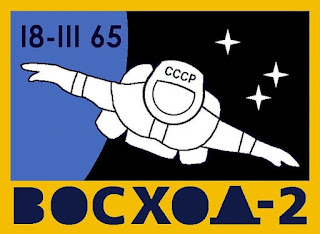As a guide my to continuing series about Dr. Duane Graveline this week, please see Dr. David Livingston's web site for THE SPACE SHOW, where the interview is now archived. So well worth the time to explore this fascinating man and his lifelong dedication to space research and medical work!
Interestingly, a few fellow project participants and modern medical personnel at Johnson Space Center were very interested in the early medical experiments about weightlessness, but my historian and flight controller friends where camped in the cheering section for Soviet BioAstronautics.
NASA Group #4: Duane Graveline
Most people today who learn about the "space race" assume the competition meant there was little flow of information between the Soviet and American space agencies; and indeed, translations of internal documents are difficult to come by, even now. However, humans being human, it doesn't mean we all weren't eavesdropping.
Before the commercial break, he described his role in the intelligence community of the 1960s, and his weekly journeys to the Pentagon and NASA Headquarters for bio-telemetry updates. From the Soviet dog flights and onward, NASA often had bio-data not long after the Soviet scientists who were tracking. Finally, they came in real-time.
At the time NASA astronauts Grissom and Young were training for the Gemini 3 Mission, they heard the Soviets had launched the second-generation vehicle, Voskhod2, from which the first spacewalk was planned. Based on earlier knowledge, Graveline advised them to point their antennas in a certain direction based on heart-rate interrupting carrier signals, already knowing they were transmitting bio-data on a particular high-frequency link with low-cost hardware.
Voskhod 2 - March 1965
Around the half-hour mark of the program, Dr. G offers his technical description of how the surveillance was accomplished. NASA had data on cosmonaut Alexey Leonov's heart rate and respiration when he became the very first man to walk in space -- and recorded the spike up to 180-beats per minute when he could not get back into the Voskhod2 spacecraft. Rather an anxious moment in orbit, one should unhumorously imagine!
With the rather risky maneuver of adjusting his suit pressure (to be about equal with the summit of Mt. Everest), he toyed with the danger of sudden unconsciousness, but managed to get back into the spacecraft. As we all know, he is still alive and well today, firmly in the history books for being the first human to survive extra-vehicular activity in orbit.
All the pieces would fall into place some years later when the actual events of the EVA were known. In 1969, NASA received the first translation from Soviet flight surgeons about the full spectrum of physiological, chemical and life-support tests conducted in the Voskhod program.
"We were spending millions, they were spending thousands."
Any proof that they were also listening in on our missions? Nope. The systems used by the USA were too complex to tap, and they certainly would have boasted about it at the time. They had plenty of other things to boast about in their impressive list of space firsts, not the least of which was that they pulled it off for peanuts, while we out-spent them on a horrendous level to usually come in second.
I'm unable to link to many specific reports in English about Soviet BioAstronautics (or what they termed "Cosmic Medicine" at the time), because most are in PDF format and only searchable by abstract through Google Books. Truckloads of reports from the 1960s have now been digitized.
If one has the stamina to start at the top GB level and paw through the reports of the Aerospace Technology Division in the Library of Congress, one can conceivably get lost in both the early American and now de-classified Soviet reports from the 1960s. Treasures abound! Happy hunting.







